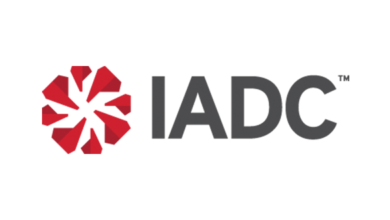Wirelines
IADC issues statement advocating for drilling offshore Florida
On 8 February, the US Bureau of Ocean Energy Management held a meeting in Tallahassee, Fla., to open a dialogue with the state’s residents on proposed drilling activities off the Florida coast. IADC President Jason McFarland issued a statement in support of inclusion of waters offshore Florida in future Interior Department lease sales:
“The State of Florida often points to its beaches and thriving tourism industry as justification for its exclusion from drilling activity. The reality is that outdoor tourism and offshore oil and gas exploration and production can coexist, and we believe that they should. The Eastern Gulf of Mexico alone, at 64.5 million acres, is projected to contain 3.6 billion barrels of oil, which would in turn support 230,000 jobs and contribute $18 billion per year to the economy. And for Florida, the available data indicates that the recoverable resources lie 100 miles or more off the coast; far from the beaches and the view of tourists who can only see 3 to 12 miles out on the horizon.
“Concurrently, the Energy Information Administration has predicted that US energy demand is set to increase, with the country requiring 12% more energy in 2040 than in 2012. This will require us, as a nation, to thoughtfully and responsibly develop all areas with technically recoverable resources, including offshore areas that have historically not been offered in lease sales. While Florida might want to claim ownership of waters beyond the state’s boundary, the fact remains that those waters where oil and gas activities would occur are located in the Outer Continental Shelf and belong to all Americans.
“The increased demand, and the subsequent increased drilling activity that will accompany it, requires that our operations are performed safely. The offshore drilling industry is committed to sending its employees home safely after each shift and protecting the waters where many of them fish and recreate. This industry has dedicated itself to developing new technology, new ways of operating and more intensive worker training programs. The results of those efforts are clearly indicated in sharply falling incident rates, as noted by both the Bureau of Labor Statistics and IADC’s own Incident Statistics Program. In addition, data from the US Bureau of Safety and Environmental Enforcement shows that the occurrence rate for offshore spills continues to improve or go down, despite producing more oil offshore.
“As the conversation around offshore drilling continues, IADC remains committed to serving as an educative resource to both legislators and the public about the ways in which we all benefit from drilling activities.”
IADC’s political action committee now active
IADC’s political action committee, DRILLERSPAC, is now up and running. It was sanctioned by the IADC Board of Directors to further advocacy engagement with federally elected members of Congress.
DRILLERSPAC is not affiliated with any political party. It is organized and conducted on a voluntary and non-partisan basis. It is overseen by the PAC Board of Trustees, which is comprised of 10 members – three each from offshore and onshore companies and two each from drilling services companies and IADC.
To date, the DRILLERSPAC has raised $14,250 from seven individuals. Twelve IADC member companies have signed the prior approval form to allow employee participation. Two $2,000 disbursements from DRILLERSPAC have been made to Rep. Garrett Graves (R-La.) and Sen. Heidi Heitkamp (D-N.D.).
Lawsuit challenges EPA offshore permit
The Center for Biological Diversity, Gulf Restoration Network and Louisiana Bucket Brigade have filed a lawsuit against the Trump administration, alleging that it is allowing oil companies to dump waste from fracking and drilling into the Gulf of Mexico without evaluating the dangers to water quality, marine species or the environment. The suit, filed in the US Court of Appeals for the 5th Circuit, challenges the Environmental Protection Agency’s (EPA) Clean Water Act permit for new and existing offshore oil and gas platforms operating in federal waters off Texas and Louisiana.
The suit contends that the EPA’s issuance of the permit failed to comply with federal environmental laws, including the Clean Water Act and National Environmental Policy Act. The suit aims to force the EPA to prohibit the dumping of fracking chemicals and other waste fluids into the Gulf unless and until the agency studies and discloses the risks.
Denmark Ends Onshore Exploration, Drilling
The Danish Minister for Energy, Utilities and Climate recently announced that the government has decided to close permitting for exploration and recovery of oil and gas both on land and in the inland waters of Denmark. The Minister stated, “The government has decided that efforts should be concentrated on production from the North Sea.”
IOGP releases updated version of DHSS guidelines
In 2013, the International Association of Oil and Gas Producers (IOGP) published guidelines for the conduct of offshore drilling hazard site surveys (DHSS), which describes good practice for conducting geophysical and hydrographic site surveys of proposed offshore drilling locations (IOGP Report No. 373-18-1). In 2015, IOGP issued a supplementary report with supporting technical information (IOGP Report No. 373-18-2).
IOGP has now published an update to the guidelines reflecting feedback on use of the original document from regulators, IOGP member companies, contractors, verification bodies and consultants.
A dedicated task force of the IOGP’s Geomatics Committee has worked with marine survey industry representatives to review the feedback received. This resulting document reflects the continued development of DHSS rationale and the latest technologies and techniques being applied for all relevant water depths and geological settings around the world.
Click here to access the free guidelines.




